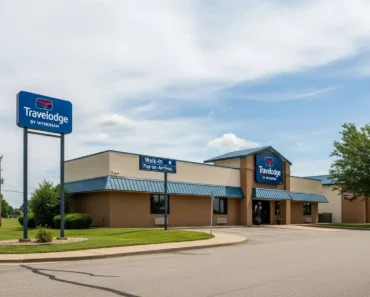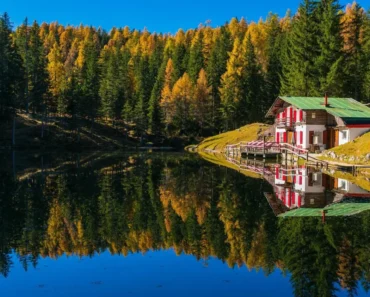The Complete History of Miami Beach’s Iconic Art Deco Treasure
The question of when did the Raleigh Hotel close reveals a fascinating story about Miami Beach’s evolution, preservation efforts, and the changing face of luxury hospitality. This Art Deco masterpiece, known for its iconic swimming pool and Hollywood connections, experienced multiple transformations throughout its storied history. Understanding its closure requires examining different eras, ownership changes, and the broader context of South Beach’s development. This comprehensive guide explores not just when the doors closed, but why it happened, what followed, and how this landmark property continues to influence Miami’s cultural landscape today.
The Original Raleigh Hotel: Golden Era Beginnings
To understand when the Raleigh Hotel close its doors for the first time, we must start at its beginning. The Raleigh Hotel opened in 1940, designed by renowned architect L. Murray Dixon in the Streamline Moderne style that defined Miami Beach’s Art Deco district. The hotel quickly established itself as a luxury destination, attracting celebrities, socialites, and wealthy travelers seeking winter refuge in South Florida.
The property gained fame for its spectacular swimming pool, described as “the most beautiful pool in America” by Life magazine in 1947. The free-form pool with its distinctive curves and waterfall feature became an iconic symbol of Miami Beach luxury. Throughout the 1940s and 1950s, the Raleigh hosted numerous Hollywood stars including Ginger Rogers, Judy Garland, and Cary Grant. Its tropical gardens, elegant ballroom, and oceanfront location made it a preferred destination for the elite.
This original iteration of the Raleigh Hotel operated successfully through the 1960s, but began facing challenges as Miami Beach’s popularity waned in the 1970s. Changing travel patterns, the emergence of newer resorts, and an aging infrastructure presented obstacles that would eventually lead to the first significant closure of the property.
The First Closure: 1970s Decline
The first time the Raleigh Hotel close its doors came in the late 1970s as part of a broader decline in Miami Beach’s hotel industry. Several factors contributed to this initial closure:
- Changing travel patterns favoring Caribbean destinations over Miami Beach
- Aging infrastructure without sufficient investment in renovations
- Demographic shifts in tourism toward younger, budget-conscious travelers
- Increased competition from newer hotels with modern amenities
- Economic challenges affecting the entire hospitality industry
The Raleigh remained closed for several years during this period, falling into disrepair along with many other Art Deco properties in South Beach. This might have been the end of the story for the Raleigh, but a preservation movement was brewing that would ultimately save not just the Raleigh but much of Miami Beach’s architectural heritage.
Key Takeaways:
- ✓
The Raleigh experienced multiple closures and reopenings throughout its history - ✓
The most significant closure occurred in 2011 for extensive renovations - ✓
The hotel is now part of the Miami Beach Convention Center hotel complex - ✓
Preservation efforts saved the Raleigh’s iconic features including its famous pool
Revival and Renaissance: 1980s-1990s
As the Art Deco preservation movement gained momentum in the 1980s, the Raleigh Hotel found new life. The property reopened after extensive renovations that restored its original architectural details while updating amenities for modern travelers. This period marked the beginning of South Beach’s transformation from a faded retirement destination to an international hotspot for fashion, entertainment, and luxury travel.
Under the ownership of the Crown family (related to the Chicago-based Crown family that owned various hospitality properties), the Raleigh became a center of the emerging South Beach scene. The hotel’s famous pool area hosted fashion shoots, celebrity events, and became a symbol of the “new” Miami Beach. During this era, the Raleigh cemented its status as one of the iconic properties of the Art Deco Historic District.
The Raleigh operated successfully throughout the 1990s and early 2000s, benefiting from the overall resurgence of South Beach. However, changing ownership patterns and the increasing value of Miami Beach real estate would eventually lead to another significant chapter in the hotel’s history.
The Major Closure: 2011 Renovation Period
The most significant modern closure occurred in 2011 when the Raleigh Hotel close its doors for a comprehensive renovation and redevelopment project. This closure was part of a larger plan to integrate the Raleigh into a new convention center hotel complex. The property had been acquired by a development group with ambitious plans for creating a major hospitality destination on Miami Beach.
Several factors prompted this closure and redevelopment:
| Factor | Impact on Closure Decision |
|---|---|
| Aging Infrastructure | Systems needed complete replacement to meet modern standards |
| Market Competition | New luxury properties required significant upgrades to compete |
| Convention Center Plans | Integration with larger development project necessitated closure |
| Preservation Requirements | Historic designation required careful, time-consuming restoration |
| Economic Considerations | Post-2008 recovery enabled investment in major renovations |
The 2011 closure was intended to be temporary, with plans for a grand reopening following renovations. However, the project encountered numerous delays, legal challenges, and design changes that extended the closure period significantly longer than originally anticipated.
Preservation Challenges and Community Response
When the Raleigh Hotel close for renovations in 2011, it sparked significant discussion about historic preservation in Miami Beach. The hotel’s designation as a historic property meant that any changes faced scrutiny from preservation boards and community organizations. This complex process contributed to the extended closure period.
Preservationists advocated for maintaining the hotel’s iconic features, particularly the famous swimming pool and distinctive facade. Meanwhile, developers sought to modernize the property and integrate it with the new convention center hotel complex. According to the National Park Service’s documentation on Miami Modern architecture, the Raleigh represented a significant example of Streamline Moderne design that merited careful preservation.
The community response to the closure was mixed. Some welcomed the investment and modernization, while others expressed concern about losing an important piece of Miami Beach history. This tension between development and preservation characterized much of the discussion around the Raleigh’s closure and eventual reopening.
The Reopening and Current Status
After years of delays and renovations, the Raleigh eventually reopened as part of the Miami Beach Convention Center hotel complex. The new development incorporated the historic Raleigh facade and preserved elements while creating a modern luxury hotel experience. The exact reopening date was somewhat ambiguous as the property transitioned through different phases of completion.
Today, the Raleigh exists as part of a larger hospitality complex that includes new construction alongside preserved historic elements. The iconic pool remains a centerpiece, carefully restored to its original glory while meeting current safety and accessibility standards. The hotel now operates as part of a major brand, offering modern amenities while honoring its architectural heritage.
The current iteration of the Raleigh maintains its connection to Miami Beach’s history while serving contemporary travelers and convention attendees. The preservation of key elements ensures that the property’s significant architectural and cultural contributions remain part of the South Beach experience.
Architectural Significance and Legacy
Beyond the question of when the Raleigh Hotel close, its architectural importance deserves examination. Designed by L. Murray Dixon, the Raleigh exemplifies Streamline Moderne architecture, a late variant of the Art Deco style that emphasized curvilinear forms, nautical elements, and horizontal lines suggesting speed and modernity.
The hotel’s most famous feature, its swimming pool, represents a masterpiece of landscape architecture and design. The free-form pool with its waterfall, surrounding gardens, and elegant deck area created a tropical oasis that became synonymous with Miami Beach luxury. This design influenced numerous other properties and set a standard for pool design that continues to be referenced today.
The Raleigh’s architectural significance extends beyond its individual features to its role in the larger Art Deco Historic District. As noted by the Miami Beach Visitor and Convention Authority, the district represents one of the largest concentrations of Art Deco architecture in the world, with the Raleigh as one of its standout properties.
Cultural Impact and Famous Connections
The Raleigh Hotel’s story extends beyond its openings and closings to its cultural impact on Miami Beach and popular culture. Throughout its history, the property hosted numerous celebrities, appeared in films and television shows, and served as a backdrop for fashion photography.
Some of the notable cultural connections include:
- Appearances in fashion magazines including Vogue and Harper’s Bazaar
- Film and television shoots utilizing the iconic pool and Art Deco architecture
- Hosting celebrity guests from Hollywood’s golden age to modern entertainment figures
- Serving as a venue for fashion events during Miami Fashion Week
- Appearance in music videos and celebrity social media content
These cultural connections helped cement the Raleigh’s status as more than just a hotel—it became a symbol of Miami Beach’s glamour and style. Even during periods when the Raleigh Hotel close for renovations, its cultural presence remained through these associations and representations in media.
Frequently Asked Questions
What was the exact date the Raleigh Hotel closed in 2011?
The Raleigh Hotel closed for renovations in late 2011, though exact closure dates are not consistently documented in public records. The closure was part of a planned redevelopment that was announced earlier that year. The property remained closed for several years as the renovation project faced delays and design changes. The extended closure period reflected the complexity of integrating historic preservation with modern hotel development.
Is the Raleigh Hotel still closed today?
No, the Raleigh Hotel has reopened as part of the Miami Beach Convention Center hotel complex. The property now operates under a major hotel brand, offering modern accommodations while preserving historic elements. The iconic pool and facade have been maintained, creating a blend of historic charm and contemporary luxury. The hotel serves both leisure travelers and convention attendees, representing a new chapter in the Raleigh’s storied history.
Why did the Raleigh Hotel close multiple times?
The Raleigh Hotel experienced multiple closures due to different factors across its history. The first major closure in the 1970s resulted from Miami Beach’s overall decline as a tourist destination. The 2011 closure was planned for renovations and redevelopment. Additional brief closures may have occurred for seasonal reasons or between ownership transitions. Each closure reflected broader trends in the hospitality industry and Miami Beach’s evolution as a destination.
What happened to the employees when the Raleigh Hotel closed?
When the Raleigh Hotel close for major renovations, employees faced transition periods typical of hotel closures. Some may have received severance packages, while others potentially found positions at other properties in Miami Beach’s extensive hospitality industry. During the extended closure, some preservation and construction workers were employed for the renovation work. When the property reopened under new management, hiring processes would have included both former employees and new staff.
Can visitors still see the historic elements of the Raleigh Hotel?
Yes, the historic elements of the Raleigh Hotel have been preserved and integrated into the new development. Visitors can still appreciate the iconic swimming pool, the distinctive facade, and other architectural features that made the property famous. The preservation effort ensured that the Raleigh’s architectural significance remains accessible even as the property serves modern travelers. The blend of historic preservation and contemporary design creates a unique experience that honors the hotel’s legacy while meeting current hospitality standards.
Final Thoughts
The question of when did the Raleigh Hotel close reveals a complex history of transformation, preservation, and renewal. From its 1940 opening through multiple closures and reopenings, the Raleigh has mirrored Miami Beach’s own evolution from seasonal resort to international destination. The most significant closure in 2011 marked not an ending but a transition—a necessary pause to reinvent the property for a new era while honoring its architectural legacy. Today, the Raleigh stands as both a preserved historic treasure and a modern luxury hotel, embodying the successful integration of past and present that characterizes the best of Miami Beach. Its story continues to unfold, reminding us that great landmarks evolve while maintaining connections to the history that made them significant.

